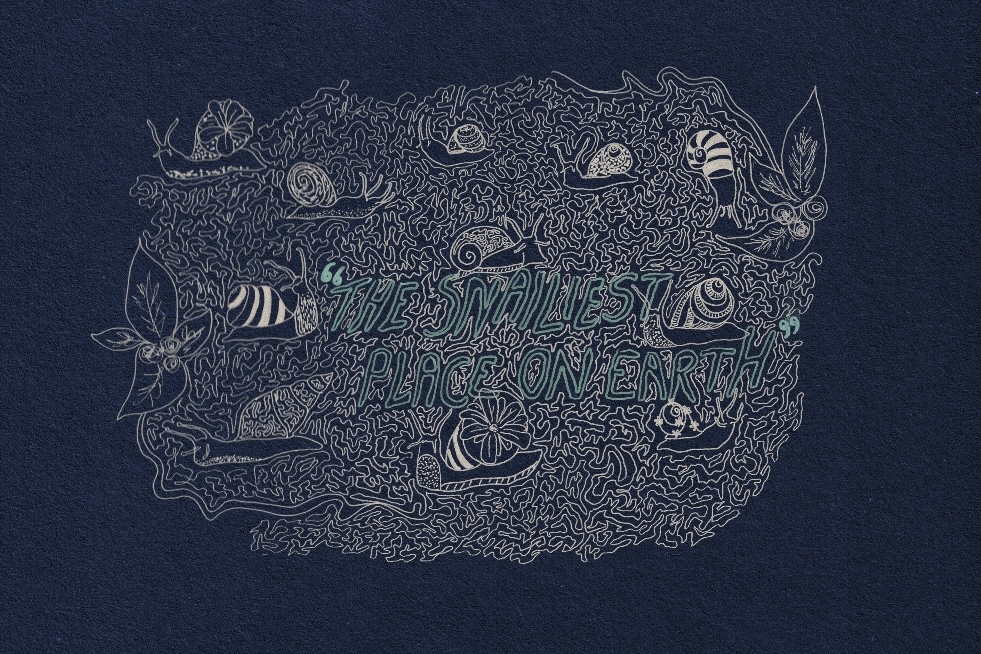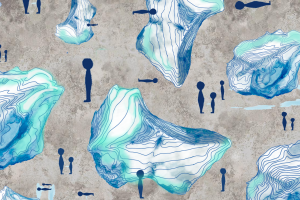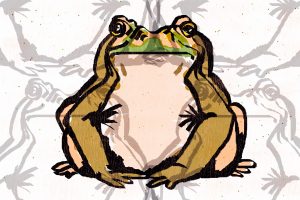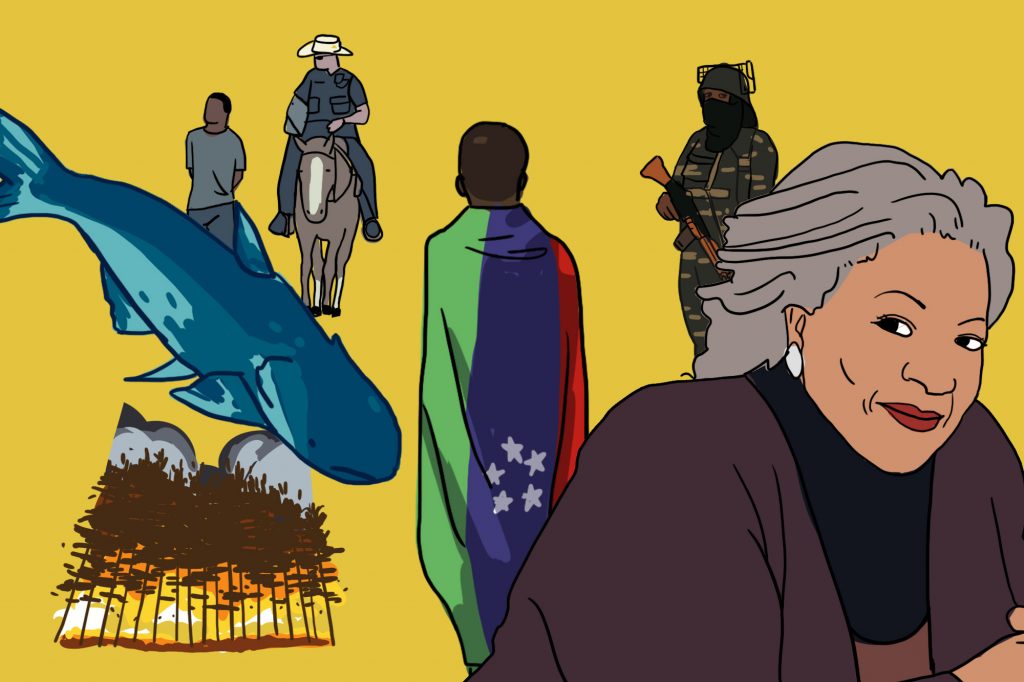
Extinctions
by Maggie Wang | February 3, 2021
The Galápagos Islands, best known as the inspiration for Charles Darwin’s pioneering work on evolution, are home to 103 endemic species not found anywhere else in the world. Such a place presents myriad mysteries and opportunities for scientists. Amongst the overlooked treasures of the archipelago are its snails. They might seem like small, insignificant creatures too distant from humans to matter, but because of their physical size and limited mobility, snail population data conveys important information about the health and needs of their environments. Their role as “ecological indicators” means that understanding and protecting snails in the Galápagos and in similar island habitats can help us better understand evolutionary processes and conservation needs. Yet even the pristine environment of the Galápagos isn’t perfect. Human intervention in the last half-century has threatened its insularity, and residents have noticed changes in climate patterns and wildlife distribution, including likely declines in snail populations.
It is difficult to know for sure whether or not these changes are anthropogenic, since the Galápagos is a sensitive place. The climate on the islands changes from year to year due to cyclical phenomena such as El Niño, which produces periodic warming of ocean surface temperatures in the equatorial Pacific. Furthermore, documenting populations for some species, including snails, is difficult, since large areas of land must be surveyed in depth before any credible conclusions can be reached. Nonetheless, human influence is clear. Invasive species have threatened the islands’ endemic wildlife for decades. For example, grazing by invasive goats, introduced to the Galápagos beginning in the 1800s, caused erosion on several major islands and threatened endemic fauna and flora, including giant tortoises. Attempts to eradicate these goats began in 1997 and concluded in 2006, when the Isabela and Santiago Islands were declared goat-free. Yet human-led eradication has not been a panacea for human-caused problems. In the last decade and a half, the formerly goat-inhabited islands have been threatened by invasive plants, which now lack animals to graze on them.
It turns out that humans are far from adept at fixing problems they have created. The question arises: should we just leave it be? Should we allow invasive species to outcompete native ones and leave a once-vibrant habitat to wither? Christine Parent, an associate professor at the University of Idaho who has devoted much of her career to studying the snails of the Galápagos, says we should only give up if there is no hope left of preserving or restoring the original environment. Pouring resources into unsustainable projects, she argues, is counterproductive, especially since we still have some undisturbed natural habitats in need of preservation. If we fail to devote resources to these last refuges, we will end up with what Parent calls “a new, human-flavoured reality”, where any conclusions from scientific research will be tainted by human influence. “There’s a lot we still don’t know in areas that should be protected,” Parent points out, and neglecting to protect those areas would entail a tremendous loss to human knowledge.
Rebecca Rundell, associate professor at the State University of New York’s College of Environmental Science and Forestry, agrees with this assessment. Rundell, whose work centres on Pacific island land snails and microscopic invertebrates, suggests that biology is too “human-centric”. Especially because many biology students are ultimately interested in medical careers, and many biologists are concerned with human medical problems, questions about evolution and species diversity in other ecological spheres often go overlooked. Rundell hopes her research will help preserve the pristine but threatened habitats of Pacific island archipelagos, such as Palau, which is home to over 200 species of land snails. These populations are unparalleled in their diversity, leaving scientists with numerous unanswered questions. Rundell doesn’t know how or why the snails arrived in Palau, which she calls “the snailiest place on earth”, but she has several theories. Since up to 99% of Palauan snail species are endemic, snails likely arrived on the islands millions of years ago and diversified afterwards. She suggests storms, the wind, or birds as possible transit mechanisms. While such colonisation events are rare, Rundell points out that “it only takes a few” individuals to spawn a new population.
Yet, Palau’s rich snail populations are now under threat from climate change, which is especially challenging for invertebrates. On land, climate change can lead to more frequent severe weather events, such as drought, which can dry up terrestrial snails’ habitats and lead to species declines. In the ocean, shelled fauna are also at risk from acidification, which is a major consequence of greenhouse gas emissions. The paucity of scientists studying invertebrates means time and resources for learning about and addressing these problems are scarce. Rundell emphasises that colonisation and Western interference in the Pacific have exacerbated these problems by introducing non-native species and accelerating the clearing of natural environments for agriculture and urban development.
One solution is to consider overlapping conservation concerns, where addressing the threats against one species can indirectly address threats against another. For example, on Palau’s Ngeanges Island, Island Conservation, a non-governmental organisation, led a project to eliminate rats which preyed on the eggs of native birds as well as on snails. Partulid land snails are found only on Pacific islands and around half of the species in the family are now extinct. This is largely because partulids are slow to reach reproductive maturity, and, once they do, they give live birth to only one snail at a time. These characteristics evolved in the absence of rats so that, upon introduction of rats, snails faced increasing difficulties in the face of predation. Rundell’s team surveyed snail populations on Ngeanges Island before and after the eradication project and found that the population of partulid tree snails, one of Palau’s most important families of land snails, may have increased after the eradication efforts. They will continue to check back in the coming years to see if more of these critically endangered snails have been able to survive and reproduce.
The fossil record provides another angle from which to approach snail conservation. Rundell points out that the best-known studies of evolution, including Darwin’s finches, emphasised differences between species and their adaptations to different habitats. However, Palauan snails are remarkable for their evolutionary stasis: “some land snail species that went extinct 100 million years ago look very similar to the species we see today,” Rundell says. This stasis, which Rundell calls “illuminating, inspiring, and disturbing”, suggests the habitat and tropical climate from millions of years ago might resemble those of today. Her research seeks to uncover the causes of this stasis. The richness of Palau’s land snail fauna holds promise not only for present-day conservation efforts but also for improving our understanding of diversification during Earth’s past and, in turn, the evolution of other species. Snails in Palau have a unique relationship with the environment; they inhabit land made of limestone karst, which is made from decomposed snail shells and corals, and they fill a distinct ecological niche as detritivores, feeding on funguses from the surfaces of leaves and thereby facilitating the decomposition of leaf litter.
These roles, combined with the myriad unanswered questions surrounding snails and their habitats, make snail conservation particularly important. To advance conservation needs, Rundell suggests, we need to build biodiversity literacy. This means introducing the public, especially young people, to a more diverse range of species. Invertebrates tend to be overlooked, but Rundell has found that people are no less interested when introduced to them. “I want people to be more curious and not limit themselves to what they already know,” Rundell says. Similarly, conservation efforts also demand a better understanding of the needs of Pacific islands. Because land in island countries is precious, urban and agricultural development are important topics among policymakers. Yet preservation is equally important, as some isolated islands continue to hold potential for scientific research. Balancing these objectives requires understanding local cultures and communities, and Rundell emphasizes that she works with local conservation groups and holds dialogues with Palauans as well as the Palauan government. Local people, after all, are the ones who understand the situation best and whose lives are most impacted by conservation efforts.
Gilianne Brodie, Deputy Director of the Institute for Applied Sciences at the University of the South Pacific, shares this philosophy. Brodie, who is of European descent, was born in Australia but is now a citizen of Fiji, where her earlier research focused on land snails. Recently, she has been more interested in transdisciplinary issues, especially in ocean habitats, and has studied the benefits of seagrasses and the threats they face from climate change and human intervention. She is part of the Pacific Islands team of One Ocean Hub, a collaborative research programme funded by the UK government which strives for “integrated and inclusive ocean governance”. She is the only scientist on her team, and, by collaborating with experts from law, education, sustainable development, and other fields, she hopes to make holistic, balanced contributions to government policy. Her desire to improve livelihoods through her work manifests particularly in her studies of resource use by women, and her earlier work on partulids informs this interest, as snails’ role as indicators of forest health can guide forest management practices.
Recognising snails’ cultural significance in Pacific island communities is crucial to informing ocean governance in the region. For example, in Fiji, some Indigenous women wear a shell known as a buli around their necks. Brodie explains that the shell’s white colour symbolises purity in Fijian culture. They are known in English as egg cowries and come from the sea snail species Ovula ovum. Similarly, Fijians use the kava plant in many traditional ceremonies, where it is served in a bowl containing a snail shell, and shells also comprise parts of the vessels Fijians use to travel between islands. In the Solomon Islands, snail shells are used as money, including as bride prices. This money is made only in one place, and the increasing rarity of snail shells poses challenges to a critical facet of Indigenous culture. Brodie points out that Indigenous peoples have incorporated sustainable resource use into their cultures: “They think holistically, and their ancestors have successfully managed these resources for centuries.” However, in recent years, their access to these resources has become increasingly vulnerable.
To address these challenges, Brodie stresses the importance of learning about and trying to understand Indigenous ways of life rather than imposing outside views about conservation on these peoples. She expresses profound respect for her Indigenous colleagues and admits that, because she is not Fijian by birth, she will never know the full reality of Fijian culture and life. However, she explains her work has “exposed me to Indigenous ways of thinking, which I need to be aware of in order to do my job properly.” The best she can do is be receptive and, since she believes that academia is fundamentally an exercise in lifelong learning, she has been able to: “put myself outside my comfort zone my entire academic career to expose myself to diversity.” Because of this, she gets frustrated when her Indigenous colleagues are treated inappropriately and when foreigners, often white Europeans, are paid to comment on problems Indigenous peoples already know all about.
Her work with One Ocean Hub applies this philosophy in an attempt to give a voice to marginalized groups. Brodie is particularly interested in low-income women, many of whom work in the informal sector, as well as areas where traditional governance intersects with increased tourism, logging, mining, and other economic activities. She emphasises the importance of collaborating with Indigenous communities and incorporating dialogues with them into the research process. Sometimes, she participates in ceremonies to ask permission to conduct research on traditionally governed land, and the occasional hesitation of Indigenous leaders to grant permission has challenged her to better understand traditional ways of thinking and working. She acknowledges the risks behind her research and the fact that “we can publish stuff, but we have a responsibility to Indigenous peoples,” both as policy advocates and in return for their support. She hopes to deliver tangible benefits to Indigenous communities, but she recognises that “respectful engagement is the bottom line.”
The problems Brodie and her colleagues hope to address in their research are not confined to Fiji. Brodie points out that Fiji, an island nation with fewer than one million inhabitants, is hitting above its weight in global climate negotiations, especially given that other island nations are facing far more severe challenges. The irony is that some Pacific nations have sought to fight—or adapt to—climate change by building new infrastructure, such as causeways between islands, which have inadvertently threatened the migratory patterns of fish and thereby possibly worsened the problems they sought to address. The fact that climate policy impacts Indigenous resource management practices makes collaboration with Indigenous groups all the more important.
Though the Pacific faces unique challenges when it comes to climate and conservation, Brodie’s insights are not limited to the region. In addition to her work in Palau, Rebecca Rundell also leads efforts to conserve the Chittenango ovate amber snail, which is found only by the side of one waterfall in New York’s Great Lakes region. Rundell’s lab has captured and bred these snails, then released their offspring back into the wild. While these efforts have seen some success, the wild population is still under threat, and Rundell is also working with local partner organizations to restore the snails’ habitat by removing invasive plants and replanting native species. This work has generated significant local publicity which could help foster biodiversity literacy and draw attention to large and small-scale conservation issues alike.
Climate change poses unprecedented challenges to scientists, policymakers, and local communities, but Rundell, Brodie, and Parent all express some degree of hope for the Earth’s future. The planet’s biological richness, so well encapsulated in its snail species, can not only teach us about our past but also how to preserve the natural world for the future. Parent points out that the Earth is surprisingly resilient and that climate change may, in some places, increase species diversity rather than decrease it. This is because climate change can lead different populations to adapt to new environments in different ways and expand into new areas. Although anthropogenic climate change has not achieved such outcomes, this possibility suggests that we might be able to preserve the Galápagos if we act in sufficient time. However, at every step of the process, we must be aware of Indigenous contributions to scientific research and conservation. Pacific island cultures have long possessed the kind of resilience that will be essential to addressing and surviving the climate crisis. Dialogue with these communities has the potential to yield tremendous insight.∎
Words by Maggie Wang. Art by Tate Tsang.




